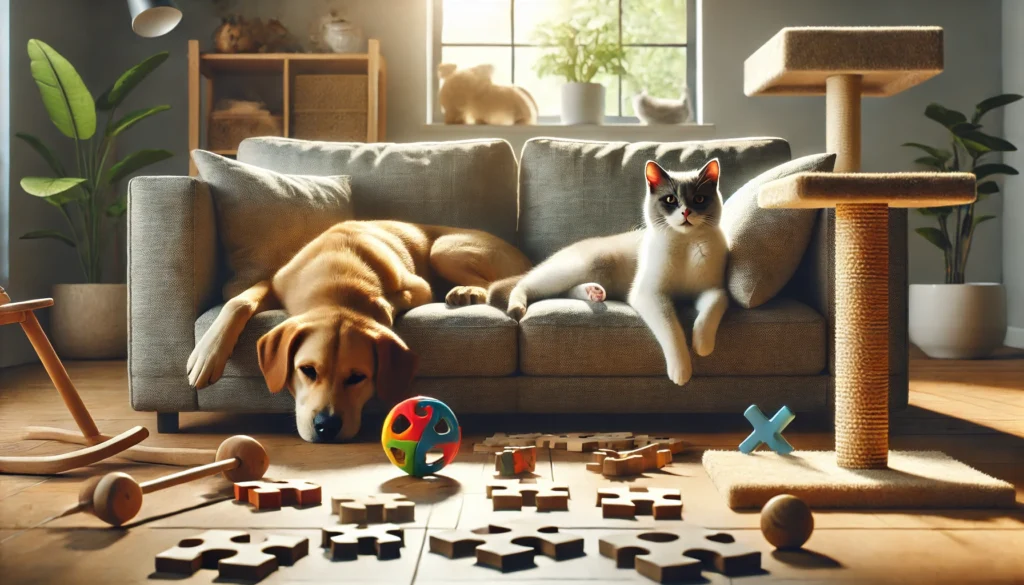Just like people, pets can experience boredom. Dogs and cats that lack mental stimulation or routine interaction can become frustrated, destructive, or even depressed. The good news is that once you recognize the signs, there are many simple ways to bring joy and engagement back into your pet’s life.
Here’s how to recognize the signs of boredom and keep your indoor pet mentally satisfied.
Common Signs Your Pet Is Bored
Boredom can show up in different ways depending on your pet’s personality. Keep an eye out for these behaviors:
- Excessive barking or meowing
- Chewing or scratching furniture
- Digging indoors or tearing objects
- Constant pacing or restlessness
- Overgrooming or licking one area repeatedly
- Trying to escape from the home
These are not signs of a “bad” pet—they’re signals that your animal needs more stimulation.
Provide More Interactive Playtime
Play is one of the best ways to relieve boredom.
- Schedule 15–30 minutes of daily play.
- Use toys that mimic prey or encourage chasing, chewing, or tugging.
- Try different games to discover your pet’s favorites.
Cats may prefer wand toys or chasing balls. Dogs often enjoy fetch, tug-of-war, or hide-and-seek with treats.
Add Puzzle Toys or Food Games
Mental stimulation is just as important as physical activity.
- Use treat-dispensing toys or puzzle feeders.
- Hide food around a room and let your pet search for it.
- Rotate toys often to keep them novel.
These activities challenge your pet and satisfy their natural instincts.
Create an Enriching Environment
Sometimes all your pet needs is a more engaging space.
- Add a window perch for cats to observe the outdoors.
- Create a cozy, quiet corner with different textures and toys.
- Leave safe items out for supervised solo play.
A stimulating environment can reduce stress and increase relaxation.
Schedule Short Training Sessions
Training offers structure and mental focus.
- Teach a new trick or reinforce an old command.
- Use positive reinforcement with treats and praise.
- Keep sessions short and fun (5–10 minutes).
Both dogs and cats benefit from the problem-solving involved in learning something new.
Provide Company or Variety
Pets are social and curious.
- If you’re home, include them in daily tasks.
- Talk to them, pet them, and keep them nearby.
- Leave on soft music or videos made for pets when you’re away.
Even background sound can help prevent loneliness or boredom.
Adjust Daily Routines
Sometimes boredom comes from predictability.
- Switch up the time of day you play or train.
- Introduce new smells, toys, or even furniture layouts.
- Offer cardboard boxes, paper bags, or crumpled paper for exploration.
Little changes can spark big curiosity.
When to Seek Help
If your pet’s boredom turns into aggression, anxiety, or obsessive behaviors that don’t improve, consult a professional trainer or vet. There could be an underlying condition or a need for more specific behavioral support.
Helping your pet stay mentally active isn’t about doing everything—it’s about doing something. A few small changes in your daily routine can turn a bored pet into a happy, curious, and calmer companion.






